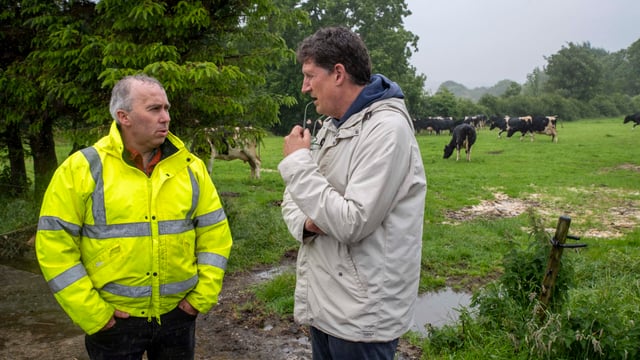Feed additives: More research required for pasture-based systems
The potential of feed additives to reduce methane levels in ruminating animals has been demonstrated by the compound 3-nitrooxypropanol - 3NOP - which was given a positive opinion by the European Food Safety Agency (EFSA) at the start of the this year.
This methane-inhibiting feed additive has been shown to reduce livestock emissions by up to 30% in an indoor-feeding system.
But more research is required to identify the best way to administer such an additive within a pasture-based system of agriculture, according to officials from the Department of Agriculture, Food and the Marine (DAFM).
The DAFM was one of three government departments before the Joint Oireachtas Committee on Environment and Climate Action today (Tuesday, June 28) where the topic up for debate was sector emissions ceilings.
Chief inspector at the DAFM, Bill Callanan, told the committee that a feed additive such as 3NOP will certainly play a role in the work that the agricultural sector must do to achieve its climate targets.
But, he cautioned against such feed additives being considered a quick-fix solution to the problem posed by ruminant methane emissions in Ireland because work still needs to be done to explore the best way for such additives to be fed to animals in a pasture-based system.
As set out in the Climate Action Plan 2021, a reduction in greenhouse gas (GHG) emissions, by the end of the decade, of between 22-30% (16-18 million tonnes of carbon dioxide equivalent [MT CO2e]), has been proposed for the agricultural sector. Currently, negotiations are ongoing into setting GHG emissions ceilings for all sectors of the economy. The outcome of these negotiations are expected within a number of weeks.
"Feed additives will be required in this decade in terms of our contribution [to climate action]. But we are identifying a level of caution in terms of that roll out," said the DAFM chief inspector.
"The practical reality is that any existing interventions, the most successful of which is 3NOP, requires continual feeding, and that is why it is [suitable] for indoor feeding systems.
"We have included it [3NOP] in our early achievement elements based on the expectation that you can feed it to the animals when they are indoors," he said.
This means that, in Ireland, it can be fed to livestock when they are housed over winter, and to dairy cows when they are being milked.
But there are issues with this mode of administration, he explained:
"You can include it in the feed ration that the animal gets at milking time, but it won't create the same level of reduction as continual [feeding].
"In the medium-term, we need new science and evolution of mechanisms to feed additives for pasture-based systems. This is not developed as we currently stand but will be required between the period from now to 2030 to bridge that gap in terms of achievement."
Agricultural inspector at the DAFM, Dale Crammond explained that Teagasc is currently looking at 3NOP in the context of "feeding it to cows in the parlour, in the morning to see what level of abatement can be achieved".
"We know we get 30% when we feed it in an indoor system of production, so what can we realistically achieve, averaged out over the year, when we include that period when animals are out in pasture," he said.
In his opening statement to the committee, chief inspector Callanan said that "even a 3% reduction in methane emissions from the Irish livestock herd over the decade would ensure no additional global warming arises from this farming activity".
"This is very much at the upper end of international ambition and will make Ireland a leader in this space.
"We are signatories to the Global Methane Pledge through which the EU has committed to cutting emissions from agriculture (biogenic methane) by 10% and cutting methane emissions from non-agricultural sources (such as landfills and some forms of energy production) by 50%.
"Our national commitments now far exceed this," he said.
He went on to say that progress on methane is more challenging but is expected to accelerate within the second five-year carbon budget as methane-reducing feed additives - referenced above - become commercially available.
But, he said, as long as we produce food, fuel or fibre, emissions will result.
"This complexity is reflected in the Climate Act which refers explicitly to the social and economic role that Irish Agriculture plays in society," he added.





